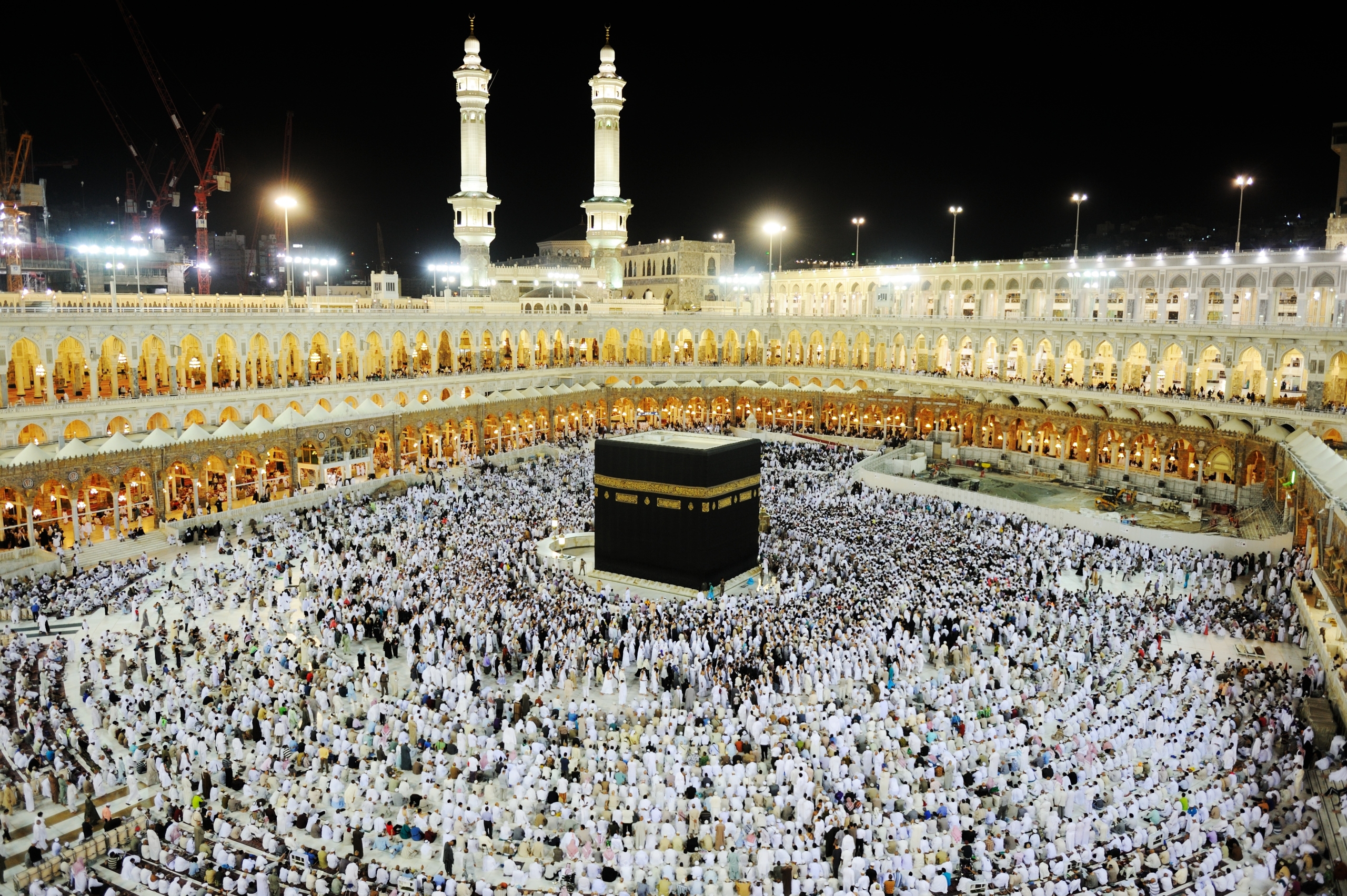The Kaaba, located in Mecca, Saudi Arabia, holds profound significance within Islamic tradition, deeply intertwined with the legacy of the prophet Abraham (Ibrahim). Its association with Abrahamic narratives, the role of the Prophet Muhammad in establishing its centrality in Islam, and its function as the focal point of the annual Hajj pilgrimage underscore its importance in the Muslim faith.
Abrahamic significance of the Kaaba
Islamic tradition holds that the Kaaba was originally constructed by Adam and later rebuilt by Abraham and his son Ishmael (Ismail) on the same foundations. This reconstruction is seen as a testament to monotheism and devotion to God. The Quran references this event:
“And [mention] when Abraham was raising the foundations of the House and [with him] Ishmael, [saying], ‘Our Lord, accept [this] from us. Indeed, You are the Hearing, the Knowing.’” (Quran 2:127)
This connection establishes the Kaaba as a symbol of pure monotheistic worship, linking it directly to Abraham, a patriarch revered in Islam.
The legend of Abraham’s sacrifice
Islamic tradition narrates that Abraham was commanded by God to sacrifice his son as a test of faith that he was prepared to fulfill. At the moment of sacrifice, God provided a ram as a substitute, sparing his son. It is believed that the horns of this ram were preserved and placed inside the Kaaba as a commemoration of Abraham’s unwavering dedication to God. Historical records indicate that these horns remained in the Kaaba, until its destruction by fire.
The Kaaba’s centrality in Islam
The Prophet Muhammad played a pivotal role in reestablishing the Kaaba’s significance in Islam. Before his prophethood, the Kaaba had become a center for polytheistic worship, housing numerous idols. Upon his victorious return to Mecca in 630 CE, Muhammad cleansed the Kaaba of these idols, restoring its dedication to the worship of one God. This act reinforced the Kaaba’s status as the spiritual heart of Islam.
Furthermore, Muhammad established the Kaaba as the qibla, the direction toward which Muslims around the world face during their daily prayers. This unifying directive underscores the Kaaba’s central role in Islamic worship and community cohesion.
The Hajj pilgrimage
The Kaaba is the focal point of the Hajj, the annual Islamic pilgrimage to Mecca, which is one of the Five Pillars of Islam. Every Muslim who is physically and financially able is required to perform Hajj at least once in their lifetime. The pilgrimage occurs during the Islamic month of Dhu al-Hijjah and involves a series of rituals, many of which are centered around the Kaaba.
Key rituals include:
- Tawaf: Pilgrims circumambulate the Kaaba seven times in a counterclockwise direction, expressing the unity of believers in the worship of the one God.
- Sa’i: Pilgrims walk seven times between the hills of Safa and Marwah, reenacting Hagar’s search for water for her son Ishmael.
- Standing at Arafat (Wuquf): Pilgrims gather at the plain of Arafat for a day of prayer and reflection, commemorating the farewell sermon of the Prophet Muhammad.
- Stoning of the Devil (Ramy al-Jamarat): Pilgrims throw pebbles at three pillars, symbolizing the rejection of evil. According to some hadiths, Adam was the first person to throw pebbles at Satan in this land. Hadiths attributed to Imam Ali, Imam al-Sajjad, and Imam al-Kazim explain that the ritual of Ramy al-Jamarat became part of the Hajj after Satan appeared to Abraham on three occasions at the locations where the three pillars now stand. In response, Abraham stoned Satan at each site, and this act was established as a symbolic rejection and defiance of evil.
These rituals serve to commemorate the actions of Abraham, Hagar, and Muhammad, reinforcing the Kaaba’s deep-rooted connection to Islamic history and faith.
The Kaaba’s association with Abraham underscores its foundational role in Islamic monotheism. Muhammad’s restoration of the Kaaba to a center of monotheistic worship and its designation as the qibla highlight its centrality in Islam. The annual Hajj pilgrimage, with its rituals deeply connected to Abrahamic traditions, further cements the Kaaba’s significance as a unifying focal point for Muslims worldwide.





